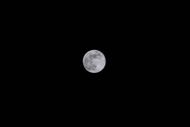The National Aeronautics and Space Administration, or NASA, made a revelation that the Earth seemingly has two moons, although it is not a permanent status. However, the second planetary object is an asteroid named 2025 PN7. It is at a distance of four million kilometers.
As per reports, this object has been in the vicinity of our planet since 1960 and shall orbit till 2083. Despite that, its small size makes it difficult to be seen with the naked eye. The planetary object can only be seen with a specialized instrument.
The planetary object was noticed by researchers at the University of Hawaii, and its size is reported to be 18 to 36 meters in width. According to Gulf News, unlike our own moon, this asteroid shall not affect the gravity or tides.
The object was discovered after a survey was conducted through Pan-STARRS. It was conducted in August 2024 at the Haleakala Observatory. According to an article published by the American Astronomical Society in September 2025:
“Quasi-satellites are in a resonant orbit but are not gravitationally bound to Earth, allowing for more sustained, though unbound, proximity; while mini-moons are characterized by temporary gravitational captures by Earth, meaning they are gravitationally bound, albeit for a limited time.”
The article also mentions:
“The available data indicate that 2025 PN7 is a relatively short-lived quasi-satellite of Earth and its short-term evolution resembles the one of Kamo‘oalewa although it is found close to Cardea.”
What did researcher Carlos de la Fuente Marcos say about Earth’s quasi-moon?

Researcher and scholar Carlos de la Fuente Marcos, who is also one of the authors of the paper published by the American Astronomical Society, said in an email to Live Science that once the status of 2025 PN7 is established, it would not be the only object to have moon-like characteristics. He said there are several other similar objects, and they could take everyone by surprise.
Describing 2025 PN7, he said it is the:
“Smallest and the least stable known quasi-satellite of Earth.”
When asked why the discovery happened late, he said:
“It is small, faint, and its visibility windows from Earth are rather unfavorable, so it is not surprising that it went unnoticed for that long.”
Astronomy enthusiast Sam Deen, who considers himself an amateur astronomer, shared his thoughts about this discovery in a statement to Sky & Telescope on September 2, saying:
“Quasi-satellites are especially interesting because their cycling around Earth allows even very small asteroids like this one to be studied for years, and often decades, as they repeatedly come back to visit us every single year.”
Deen explained that because these objects moved slowly and stayed close to our planet, it was easier and cheaper for spacecraft to reach them. He said this made them good targets for future missions, like exploring, collecting samples, or even mining.
Also Read: What is ChatGPT Atlas? All about OpenAI's new browser taking on Google Chrome and Microsoft Edge
